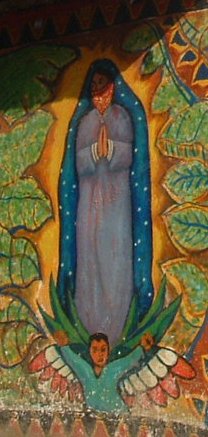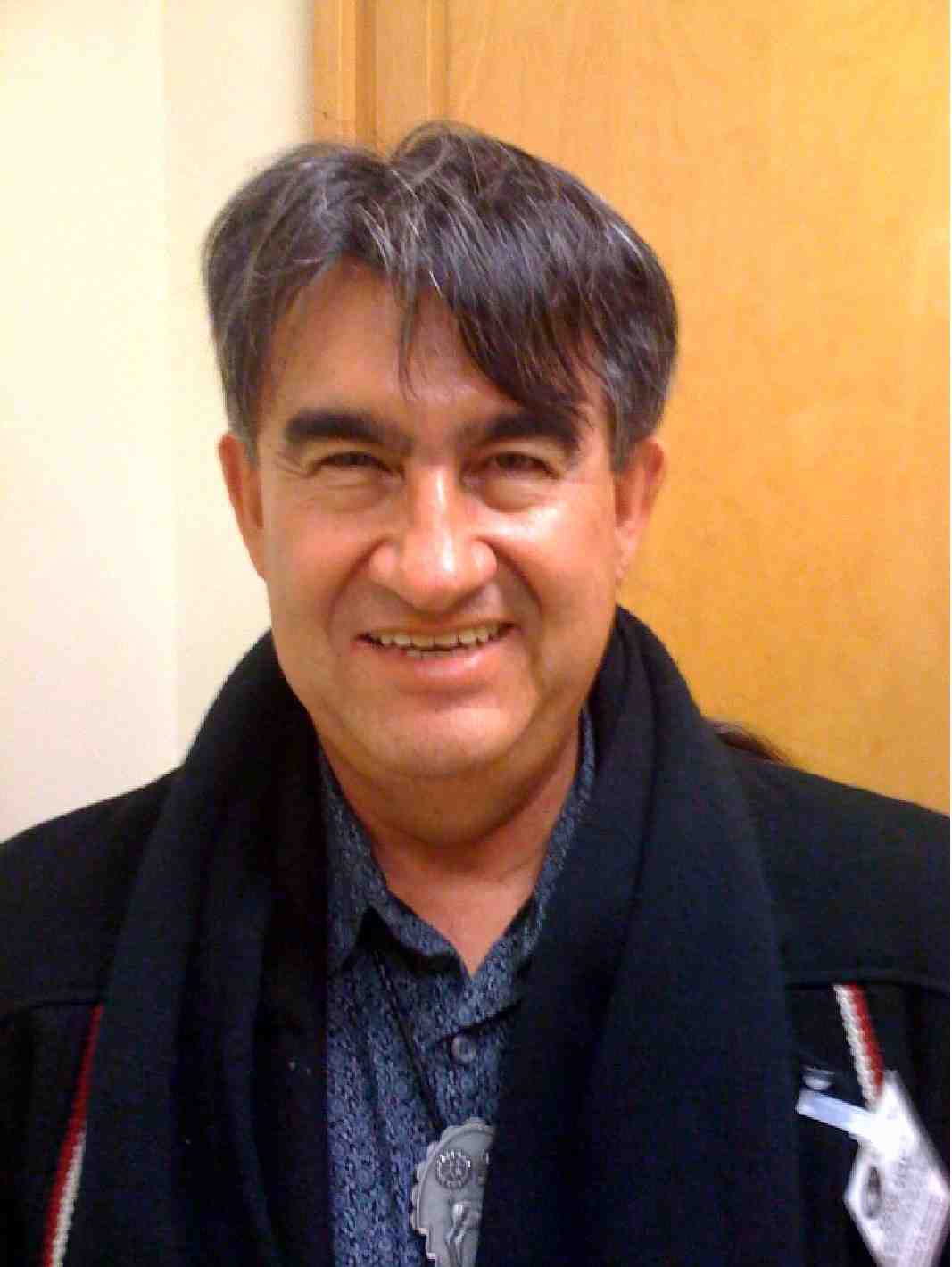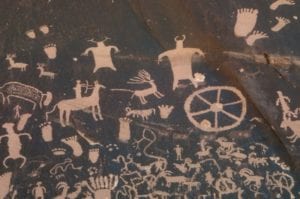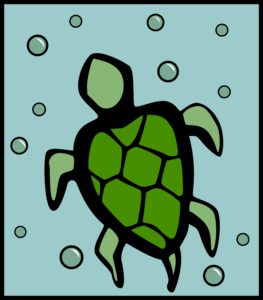Excerpts from an interesting post on comic books, animism, magic, saints and super heroes, psychology, history, alchemy, and Catholicism, Jules Evans @ The Politics of Well-Being
~~~~~~~~~~~~~~~~~~~~~~~~~~~~~~~~~~~~~~~~~~~~~
[This is an edited version of the first chapter of a book I wrote but didn't get published, about how modern animation, and particularly superhero comics, have their origins in animist beliefs that were pushed out of the mainstream by first the Protestant Reformation and then the Scientific Revolution. These animist beliefs may have been suppressed and discredited, but they remain in the folk consciousness, and give rise to cultural phenomena like our love of superhero stories.]
. . . Superheroes are a flight from the rationalism of the modern world, from what Max Weber called the ‘Iron Cage’ of rationalism in Protestantism and the Spirit of Capitalism. Part of that rationalism, as Weber noted, was the bureaucratization of modern life: the welfare state, the NHS, the web of government agencies and regulations through which the modern individual must try to find their way. The superhero was born in the 1930s, during the New Deal, which was the greatest increase in the size and power of state bureaucracy yet seen in politics.
Superhero myths express a longing for a simpler kind of politics, for an earlier age, when the people felt a strong emotional bond to a charismatic warrior or prophet.
Weber defined the charismatic leader as akin to a superhero, in that the charismatic is “endowed with supernatural, superhuman, or at least specifically exceptional powers or qualities. These as such are not accessible to the ordinary person, but are regarded as divine in origin or as exemplary, and on the basis of them the individual concerned is treated as a leader.” We remember that charis means gift in Greek, so it’s not so far from the Greek or animist belief that superheroism is granted as a gift by the Gods or the spirit world.
In a century of mass movements, mass production, mass employment – a century of the masses in other words – superhero myths celebrated acts of individual heroism. They hark back to tribal times when an individual could make a difference to the future of the tribe, could ‘save the day’. The heart of superhero myths, like other heroic narratives, is the trial by individual combat, the wrestle, the boxing match, the fighter-pilot dog-fight, the Western duel.
As Weber noted, the modern bureaucratic state asserts a monopoly on violence, while we long to escape from this cage, to indulge our pre-civilized desire to beat up, torture and kill our enemies. Comics give us an outlet for this bloodlust. They release the wild man from the iron cage. . .
. . . So superhero comics are imperialist, jingoistic, anti-democratic, anti-civilization and devoted to the worship of uninhibited violence and (in manga) frequently rape as well. They come from the same dark, tribal and irrationalist part of the psyche that led to fascism.
But we can’t say that comics created this part of our psyche. Perhaps they help us become more aware of it. Indeed, the present generation of comic book writers is very much aware of the amoral and even fascist strains in superhero myths, and they consciously explore them. The costume and character of Judge Dredd, for example, was consciously modelled on
Jamie Delano, creator of Hellblazer, has said that comics “are shining a light on the beast which crouches in the corners of our minds, giving us a chance to both recognize it and oppose it”. This is true of the most conscious hero myths – they make us aware that the demon the hero is fighting is actually a manifestation of his own psyche, a reflection of himself. This point is made in Martin Scorcese’s Taxi Driver, in the famous scene where Robert De Niro stands in front of a mirror and says ‘you talkin’ to me?’, practicing playing the heroic vigilante to his own reflection. The point Scorcese or writer Paul Schrader seem to be making is that this particular violent ‘hero’ is fighting his own shadow, his own demons, projected onto external figures.
We see a similar exploration of the hero myth in Sophocles’ Oedipus trilogy, which to my mind is the greatest hero myth we have in our culture. At the beginning of it, Oedipus the heroic slayer of the Sphinx and saviour of
“Some demon of the night,
Some destructive impulse in man, prowling
Silently around you, waiting its chance,
Has sprung with inhuman strength, howling
At your throat.”
And yet Oedipus’ true heroism is that he doesn’t project these demons onto others, and then blame them for his mistakes and suffering. He takes responsibility for them. He says: “I’m the one / Who must bear the guilt and the punishment / And the shame. And I must bear it alone.”
While the rest of us run from our demons or project them onto others who strike us as strange, alien or threatening, Oedipus has the moral courage and self-awareness to confront his demons, to endure their wrath, to endure the loss of everything he has. And yet this submission, this annihilation of his ego, leads to a transformation.
By the second play in the trilogy, Oedipus at Colonus, the demonic spirits that tormented him are placated, and become his helpers, granting him magical powers. He becomes a shaman-hero, in touch with the chthonic spirits, able to see the future and to read the signs of nature, and his body has magical powers to protect the city where he is buried. So the hero goes from being a demon-slayer to the integrator of the daemonic.
Why do we need such heroes? Civilization, as Freud told us, forces us to repress or hide the primitive aspects of our self – the violent, the sexually uninhibited, the wild.As we hide or repress these parts of us, they become demonic and hostile to our conscious selves. They attack our realities, trying to gain expression and release. Our selves become divided and at war, like Jekyll and Hyde.
At a simple level, comics, like dreams, provide an outlet for that which is forbidden by civilization. Manga, in Japanese, means “irresponsible pictures”. Comics take us to the forbidden underworld – that’s why so many superheroes live in caves, like the Batcave, and why comic book stores like Forbidden Planet in
The underworld is home to demons and monsters. But, if Jung is to be believed, it is also the source of our divinity, and home to powers and forces that we have forgotten, and to spirits that guide us on our journey. Joseph Campbell wrote: “the human kingdom, beneath the floor of the comparatively neat little dwelling we call our consciousness, goes down into unsuspected Aladdin caves…There not only jewels but also dangerous jinn abide: the inconvenient or resisted psychological powers that we have not thought or dared to integrate into our lives.”
We must confront the Unconscious, recognize it, take responsibility for it and integrate it, if we are to continue on our journey to enlightenment.
. . . in Princess Mononoke, the world of humans has become out of balance with nature. The spirits of nature, no longer heeded or respected by humans, have become demonic, and try to attack and destroy human civilization. The nature spirits are led by a magical warrior-princess called Mononoke. The only person who doesn’t try to fight the spirits is Ashitaka, a warrior who has been wounded by a demonic boar. He sees that the nature spirits are just trying to restore the natural balance, and that they are necessary for the flourishing of life on the planet. He risks his life trying to intercede in the battle between civilization and the spirit world, and though the humans’ city is destroyed, a new and better civilization is born, one which will perhaps be more in harmony with the planet.
The superhero, in these films, is like the Romantic poet or the tragic hero. They are the heroic intermediaries between civilization and the spirit world of nature that humans have left behind. They are seized, possessed, by spirits, who drag them down to the underworld. The hero manages to overcome this challenge, this death of the ego, and to make peace with the spirits.
He or she then returns to civilization, as the ‘master of both worlds’, helping us to accept the daemonic parts of us that we feared, helping to re-connect us to the spirit world, bringing the conscious world into balance with the unconscious, and thus protecting the conscious world (or the City) from destruction at the hand of demonic or unconscious forces. And this re-connection to the spirit world is also a re-connection to the world of nature. As Coleridge put it, the poet (or hero) helps overcome “the enmity of nature” – that feeling that our civilized selves are fake, inauthentic, out of touch and even at war with our deeper nature.
This old belief in the possibility of an animist relationship with the spirits of nature has been rejected from the mainstream of Western liberal, rationalist and capitalist society. And yet we find it, like a diamond in a junk shop, in the cheaply-printed pages of superhero comics, through which is expressed the longing, as Michael Chabon puts it, “truly to escape, if only for one instant; to poke one’s head through the borders of this world, with its harsh physics, into the mysterious spirit world that lay beyond”.
So superhero comics can turn up a lot of nasty parts of the psyche – nationalism, tribalism, sexual violence, moral simplification, the demonization of enemies. They speak to a primitive part of the psyche, which often feels itself at threat from invisible forces that it does not understand and before which it feels helpless. At their most basic level, they can appeal simply to the longing for violence and domination which civilization forces us to repress.
But higher forms of the medium can do more than this. They can help us to recognize, accept and transform the darker parts of our psyche. They can make us feel re-connected to our selves and to nature. Our divinity, Jung suggested, lies waiting for us in the dark underground of our souls, if we have the courage to descend there.
The artist, in this model of art, is the real superhero. He or she has the courage to descend to the depths, like Orpheus descending to the underworld, in order to re-connect us to the spirit world, and thus to our divinity.
This belief in the artist as superhuman medium between the mundane and the spirit world goes back to the earliest human art, to the idea that the shaman drawing a picture of a buffalo on the side of a cave would somehow win the favour of nature spirits for the tribe’s next hunting expedition. Shamans, as we’ll see, are artists as much as they were priests or doctors. They go into trances, become hosts to spirits, and then sing, dance, declaim verse and paint pictures. . .
. . . When the Protestant Reformation and the ensuing scientific revolution pushed animist and magical beliefs to the sidelines, this belief in the magical power of art was also marginalized. The polite eighteenth century poet Alexander Pope might describe the spirit world in his poem, The Rape of the Lock, but his description is reduced to little more than an amusing literary device.
The Romantics, however, passionately resurrected this idea of the artist as spirit-vessel in their rebellion against the rational and mechanistic world-view of their era. The poet, in the works of Coleridge or Wordsworth, was a man possessed, seized by the spirits of nature and made to act as their conduit, their lightening conductor, in order to communicate their message to mankind. Or the artist was a sorcerer who created Golem-type animated figures, like Dr Frankenstein in Mary Shelley’s Gothic fantasy.
The last gasp of this exalted view of the artist in European culture was probably in the 1920s, with modernist artists like Kandinsky or Duchamp, both of whom were influenced by alchemical or shamanic ideas, and with modernist writers like TS Eliot or Antonin Artaud. But the anti-democratic and often pro-fascist stance of some of the key figures in modernism helped to further discredit the view of the artist as some sort of exalted emissary from the spirit world.
As our idea of art has become less and less exalted over the last century, so our conception of the poet or writer has calmed down, until the writer is now, in the modern mind, simply a peevish and vain man trying, like the rest of us, to get paid and get laid.
But at the margins of culture, below the radar of mainstream literary culture, the comic book artist rebels against this mundane and commercial view of art, and reclaims the exalted conception of the artist as shaman. Thus Alan Moore, one of the most famous writers in comics today, said in a recent interview: “I think that artists have been sold down the river… I think that over the last couple of centuries, Art has been seen increasingly as merely entertainment, having no purpose other than to kill a couple of hours in the endless dreary continuum of our lives. And that’s not what Art’s about, as far as I’m concerned. Art is something which has got a much more vital function.”
He is himself a practicing sorcerer, seeing himself as in the tradition of scholarly magi like John Dee and Girolamo Cardano. Like those figures, he believes he has been visited by spirits from other dimensions, including by a snake god called Glycon that he connects to the Greek snake-god Aesculapius. In this, again, he is connecting to an old tradition in European culture – Sophocles also believed he was visited by the god Aesculapius in the form of a snake.
Other comic artists are also practicing magi – Alejandro Jodorowsky, for example, who wrote the cult comic series The Incal, is also a practicing tarot magician and healer. And the idea of the artist as shaman or spirit-conjuror is very much alive within comic narratives. The father of the modern comic is considered to be the German artist Rudolph Topfer, whose works including a graphic re-telling of the myth of Dr Faustus, who sells his soul to the Devil in return for superhuman powers.
Another of Goethe’s stories of spirit conjuring, a poem called the Sorcerer’s Apprentice, was a main influence on Disney’s Fantasia, where the sorcerer Yensid (Disney backwards) has extraordinary powers to channel spirits into household objects and make them dance at his command.
We see the neo-Platonic idea of the artist as a being possessed by spirits in the first ever issue of Spiderman, in which we see the writer Stan Lee sitting at his desk in the middle of the night, unable to sleep, with superheroes leaping around his head and resting on his shoulders like spirit familiars. The comics writer Neil Gaiman has also repeatedly explored the idea of the artist as someone who channels or makes pacts with spirits from other dimensions, in his comic series The Sandman. And the tradition has its most recent addition in the figure of the artist Isaac Mendez, who goes into a trance and paints the future in NBC’s Heroes.
So there’s a strange situation where comics, supposedly the irresponsible child of the ‘serious’ arts, is actually arguing for a more dignified and exalted conception of the arts than exists in the cultural mainstream. The comic artist, at least in their own conception, has a crucial role to play in our society, in connecting us to the spirit world that we left behind some two and a half centuries ago after the Protestant Reformation. We may not literally or consciously believe in these animist beliefs anymore. But the success of comics and superhero myths in the last 70 years shows that, whatever we say publicly, these myths still resonate powerfully in the folk imagination.
Read the whole post @ http://www.politicsofwellbeing.com/2009/10/everything-is-full-of-gods.html










